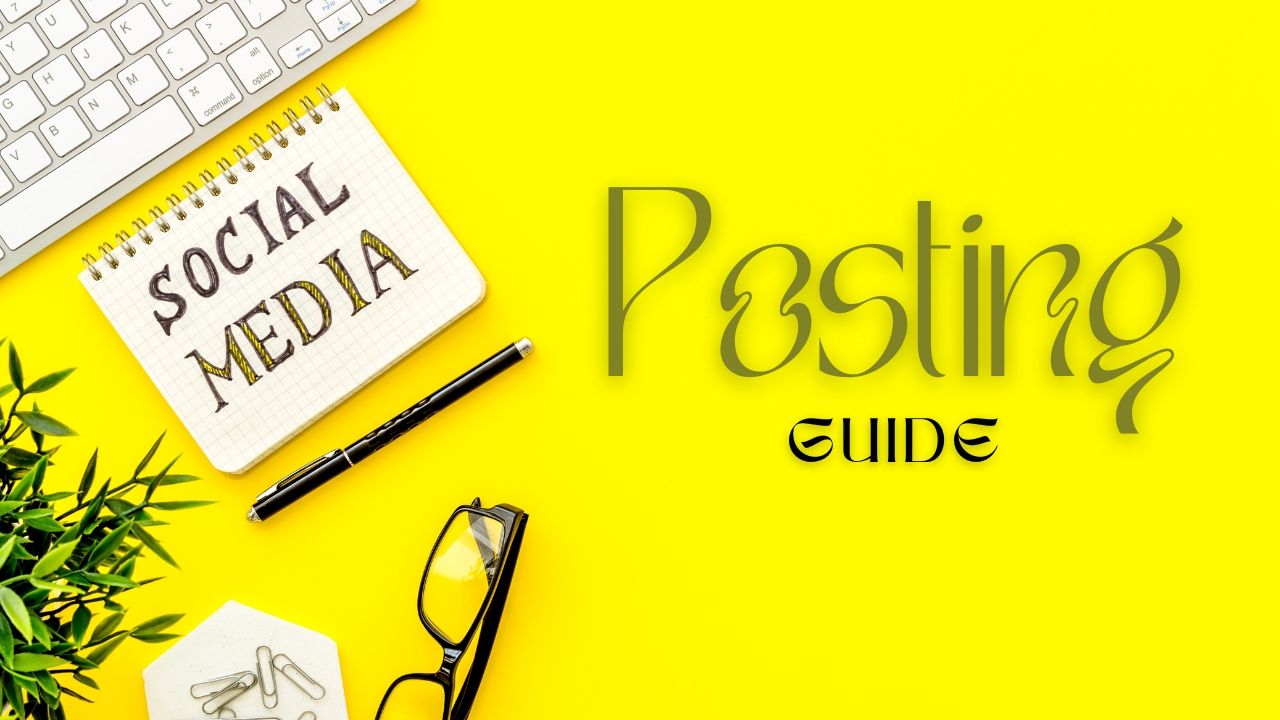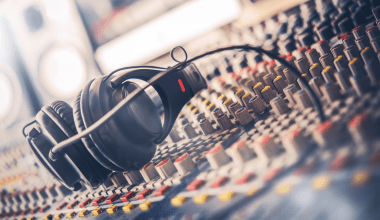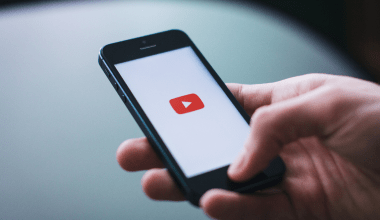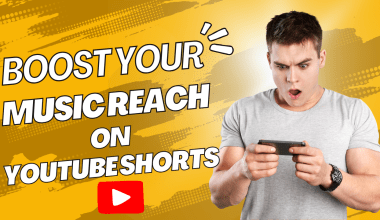In today’s digital age, having a strong online presence is essential for musicians. The Social Media Posting Guide is designed to help you navigate the complexities of various platforms. With millions of users online daily, social media offers an unparalleled opportunity to connect with fans, share your music, and grow your audience. But without a strategic approach, your efforts might not yield the desired results. This guide will help you craft a plan that works, focusing on key strategies, tips, and best practices for effective social media posting.
Social media is more than just a tool for sharing updates; it’s a powerful platform for building your brand, engaging with fans, and promoting your music. By using a well-thought-out Social Media Posting Guide, you can make sure that every post you share is working to increase your visibility, engagement, and fan base.
For musicians, social media acts as a direct line to their audience. Unlike traditional media, where there is a gatekeeper deciding who gets exposure, social media allows you to control your narrative and connect with your audience on your terms. This is why a solid Social Media Posting Guide is crucial—it ensures that you are maximizing every opportunity to reach and engage with your fans.
Understanding Your Audience
Before diving into posting, it’s crucial to understand who your audience is. Knowing their preferences, the platforms they use, and the type of content they engage with will help you tailor your posts to meet their interests. A successful Social Media Posting Guide starts with identifying your target audience.
For example, if your music appeals to younger audiences, platforms like TikTok and Instagram might be more effective. On the other hand, if your audience is older, Facebook and YouTube could be more suitable. Understanding these nuances allows you to create content that resonates more deeply with your followers, making your social media efforts more effective.
Choosing the Right Platforms
Not all social media platforms are created equal. Each one has its own strengths, and it’s essential to choose the platforms that align with your goals and audience. The main platforms you should consider include:
- Instagram: Ideal for visual content and short videos.
- Facebook: Great for building a community and sharing longer posts.
- Twitter: Perfect for real-time updates and engagement.
- YouTube: Essential for sharing your music videos and vlogs.
- TikTok: Growing rapidly for short, viral content.
By focusing on the platforms where your audience spends their time, you can maximize the impact of your Social Media Posting Guide.
Crafting the Perfect Post
Creating engaging content is the heart of your Social Media Posting Guide. Each post should be crafted with your audience in mind. Here are some key elements to consider:
- Visuals: Use high-quality images and videos. Visual content is more likely to be shared and engaged with.
- Captions: Keep them short, relevant, and engaging. Ask questions, use call-to-actions, and include relevant hashtags.
- Timing: Post when your audience is most active. Each platform has optimal posting times that you should aim to hit.
- Consistency: Regular posting keeps your audience engaged. Use a content calendar to plan your posts.
Your posts should also reflect your brand identity. Consistency in visuals and tone of voice helps establish your brand. Whether you are going for a casual, friendly tone or a more professional and polished approach, maintaining this across all your posts strengthens your brand identity. This is a critical aspect of any effective Social Media Posting Guide.
The Importance of a Content Calendar
A content calendar is an essential tool in your Social Media Posting Guide. It helps you plan and schedule your posts, ensuring consistency and reducing the stress of last-minute content creation. By planning ahead, you can create a mix of content types—such as promotional posts, behind-the-scenes glimpses, and interactive content like polls or Q&A sessions—that keeps your audience engaged.
For example, you might plan to post new music updates every Monday, share behind-the-scenes videos every Wednesday, and engage with fans through live Q&A sessions every Friday. This level of planning ensures that your content is varied, timely, and aligned with your overall strategy.
Hashtags and keywords are vital for increasing the reach of your posts. A good Social Media Posting Guide should include a list of relevant hashtags and keywords that resonate with your audience and industry. For instance, using hashtags like #NewMusic, #IndieArtist, or #MusicVideo can help your posts reach more users interested in your genre.
It’s also important to use a mix of popular and niche hashtags. While popular hashtags have a larger audience, they are also more competitive. Niche hashtags, on the other hand, might have a smaller audience, but they are more targeted and can lead to higher engagement from those who see your posts.
Engagement is Key
Posting content is just the beginning. Engaging with your audience is where the magic happens. Reply to comments, like and share fan posts, and create opportunities for your audience to interact with you. This aspect of the Social Media Posting Guide is crucial for building a loyal fanbase.
Engagement also means being responsive. Fans appreciate when their favorite artists take the time to acknowledge them. Whether it’s a simple like on a comment or a thoughtful reply to a question, these small interactions can build a stronger connection with your audience.
Analyzing Your Performance
To improve your social media strategy, you need to analyze the performance of your posts. Most platforms offer analytics tools that provide insights into how your content is performing. Track metrics like engagement rates, shares, and follower growth. This data will inform future decisions in your Social Media Posting Guide, helping you refine your approach over time.
For instance, if you notice that posts with behind-the-scenes content get more engagement, you might decide to increase the frequency of such posts. Conversely, if certain types of posts are underperforming, you can adjust your strategy accordingly. Regularly reviewing your analytics is essential for optimizing your social media presence.
Optimizing Posting Times
Knowing when to post is as important as what you post. Each platform has peak times when users are most active. For example:
- Instagram: Late mornings and early evenings on weekdays.
- Facebook: Early afternoon on weekdays.
- Twitter: Late mornings on weekdays.
- YouTube: Early afternoon on weekdays and weekends.
- TikTok: Evenings, particularly after 6 PM.
Posting at these times can significantly increase your content’s visibility and engagement, making this a critical component of your Social Media Posting Guide.
However, it’s important to note that these times can vary based on your audience. Use the analytics tools provided by each platform to determine when your followers are most active, and tailor your posting schedule accordingly. Over time, you may find that your audience has unique habits that differ from general trends.
Creating Engaging Stories and Reels
Stories and Reels are becoming increasingly popular across platforms like Instagram and Facebook. They offer a more casual, behind-the-scenes look into your life and work. Use these tools to showcase snippets of your music-making process, share updates, or simply engage with your audience in a more personal way. Integrating these into your Social Media Posting Guide can help keep your content fresh and engaging.
Stories and Reels also allow you to experiment with content. Because they are short-lived and less formal, you can try different types of content to see what resonates most with your audience. This can be a fun way to engage with fans while also gathering insights into what works best for your brand.
Running Ads and Promotions
Sometimes, organic reach isn’t enough, and you might need to boost your posts or run ads to reach a larger audience. Facebook and Instagram offer robust advertising tools that can target specific demographics. When planning your Social Media Posting Guide, consider allocating a budget for ads, especially around key releases or events.
Promotions can also include giveaways, contests, or special announcements. These can create a buzz around your music and encourage more people to engage with your posts. When done correctly, these strategies can significantly increase your visibility and grow your fanbase.
Collaborations and Features
Collaborating with other artists or influencers can help you tap into new audiences. Consider features like guest posts, collaborations on Reels or TikToks, and shoutouts. These collaborations can be a powerful part of your Social Media Posting Guide as they increase your visibility and credibility.
Collaborations are particularly effective because they introduce you to an audience that is likely already interested in your genre of music. When an influencer or another artist shares your content, it serves as an endorsement, making it more likely that their followers will check out your music.
Building a Community
Your goal should be more than just gaining followers; you should aim to build a community. This can be done through regular interaction, creating exclusive content for followers, and even hosting live sessions. A strong community will support your music and help spread the word about your work.
Building a community also involves creating content that encourages interaction among your followers. For example, you could start a discussion thread, host a Q&A session, or create a fan club where members can share their own content related to your music. These activities foster a sense of belonging and loyalty among your fans.
There are numerous tools available that can help you manage your social media presence. Tools like Hootsuite, Buffer, and Sprout Social allow you to schedule posts, monitor engagement, and analyze performance across all your social media accounts. Integrating these tools into your Social Media Posting Guide can streamline your efforts and ensure you’re making the most of your time.
Social media management tools also provide valuable insights and reports that can help you understand what’s working and what’s not. These tools often include features like social listening, which allows you to monitor what people are saying about you or your music online. By staying on top of these conversations, you can engage more effectively and even address any issues before they escalate.
Staying Up-to-Date with Trends
Social media is constantly evolving, with new features and trends emerging regularly. Stay informed about the latest developments to keep your content relevant. Whether it’s a new feature on Instagram or a trending challenge on TikTok, incorporating these into your Social Media Posting Guide can keep your content fresh and engaging.
Being adaptable and quick to experiment with new trends can give you a competitive edge. For example, when TikTok introduced the Duet feature, many artists used it to collaborate with fans or other musicians, creating viral content that significantly boosted their visibility. By staying ahead of the curve, you can ensure that your social media presence remains vibrant and exciting.
Building a Personal Brand
Your social media presence is an extension of your brand. Every post, comment, and interaction contributes to how people perceive you. A consistent and authentic online presence is key to building a strong personal brand. Your Social Media Posting Guide should reflect your brand’s values, personality, and voice.
To build a strong personal brand, focus on authenticity. Fans appreciate when artists are genuine and relatable. Share your journey, struggles, and successes in a way that resonates with your audience. This transparency can help build trust and loyalty, making your fans more likely to support your music.
Incorporating Fan-Generated Content
One of the most powerful tools in your Social Media Posting Guide is fan-generated content. Encouraging your fans to share their own content related to your music—whether it’s covers, fan art, or reviews—can create a sense of community and increase engagement. Featuring this content on your platforms not only shows appreciation for your fans but also encourages others to create and share their own.
Fan-generated content also adds variety to your feed and gives you fresh content without requiring much effort on your part. Moreover, it helps to build a stronger bond with your audience, as they feel more connected and valued when you showcase their contributions.
Hosting Live Sessions
Live sessions are a great way to connect with your audience in real-time. Whether it’s a live Q&A, a mini-concert, or a behind-the-scenes look at your creative process, live sessions add a personal touch to your social media strategy. They allow fans to interact with you directly, ask questions, and get to know you better. Including regular live sessions in your Social Media Posting Guide can significantly boost your engagement levels.
Live sessions are also a great way to promote new releases or upcoming events. You can use these sessions to build anticipation, give exclusive previews, or even host live listening parties. The real-time interaction during these sessions can make your fans feel more involved in your journey, which can translate to stronger support for your music.
Consistency and Patience
Building a successful social media presence doesn’t happen overnight. It requires consistency, patience, and a lot of effort. Stick to your Social Media Posting Guide, stay true to your brand, and continue engaging with your audience. Over time, these efforts will pay off, helping you build a loyal fanbase and a strong online presence.
Remember, social media is a long-term game. While viral posts can give you a quick boost, it’s the steady, consistent effort that will sustain your growth and keep your fans engaged over time.
Integrating Email Marketing
While social media is powerful, it shouldn’t be your only strategy. Integrating email marketing into your Social Media Posting Guide can help you connect with your audience on a deeper level. Emails allow you to share more detailed updates, exclusive content, and direct calls to action. By encouraging your social media followers to join your email list, you can build a more direct and personal relationship with your fans.
Email marketing is particularly effective for driving sales, promoting tours, or releasing new music. It’s a direct line to your most engaged fans, and when combined with a strong social media strategy, it can significantly amplify your outreach.
As your social media presence grows, opportunities for monetization will increase. From sponsored posts and brand partnerships to selling merchandise directly through platforms like Instagram and Facebook, there are numerous ways to generate income from your online activities. Your Social Media Posting Guide should include strategies for monetization as your audience grows.
Monetization can also come in the form of fan subscriptions or crowdfunding. Platforms like Patreon allow artists to offer exclusive content or experiences in exchange for a monthly fee. This not only provides a steady income stream but also deepens your connection with your most dedicated fans.
Avoiding Common Pitfalls
While social media offers many opportunities, it also comes with potential pitfalls. Common mistakes include overposting, which can overwhelm your audience, or underposting, which can lead to decreased engagement. Your Social Media Posting Guide should help you find the right balance.
Another common pitfall is engaging in negative interactions online. It’s important to maintain a positive and professional demeanor on social media, even in the face of criticism. How you handle online interactions can significantly impact your reputation and brand. Always think before you post, and remember that once something is online, it’s there forever.
Conclusion
The key to success on social media is consistency, engagement, and a clear strategy. This Social Media Posting Guide provides you with the foundation you need to start building a strong online presence. By understanding your audience, crafting the perfect post, and staying engaged, you can grow your fanbase and take your music career to the next level.
Incorporate the tips and strategies discussed in this guide into your daily routine, and you’ll be well on your way to mastering social media. Whether you’re just starting out or looking to refine your approach, this guide will help you navigate the ever-changing landscape of social media with confidence and clarity.
For further reading, explore these related articles:
For additional resources on music marketing and distribution, visit Deliver My Tune.






